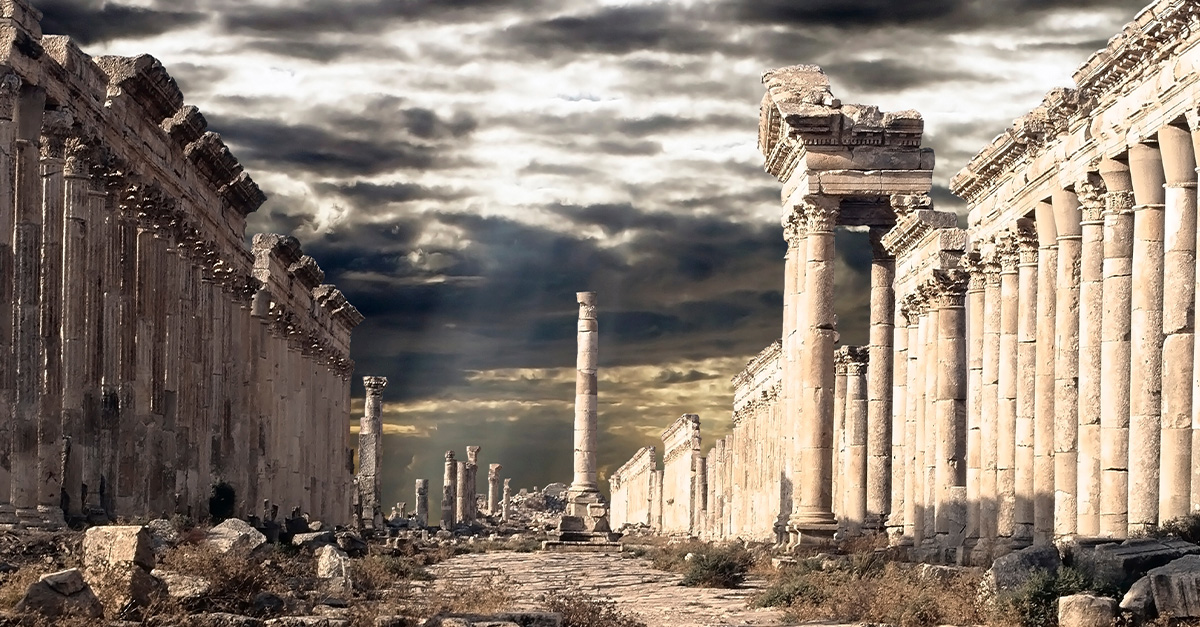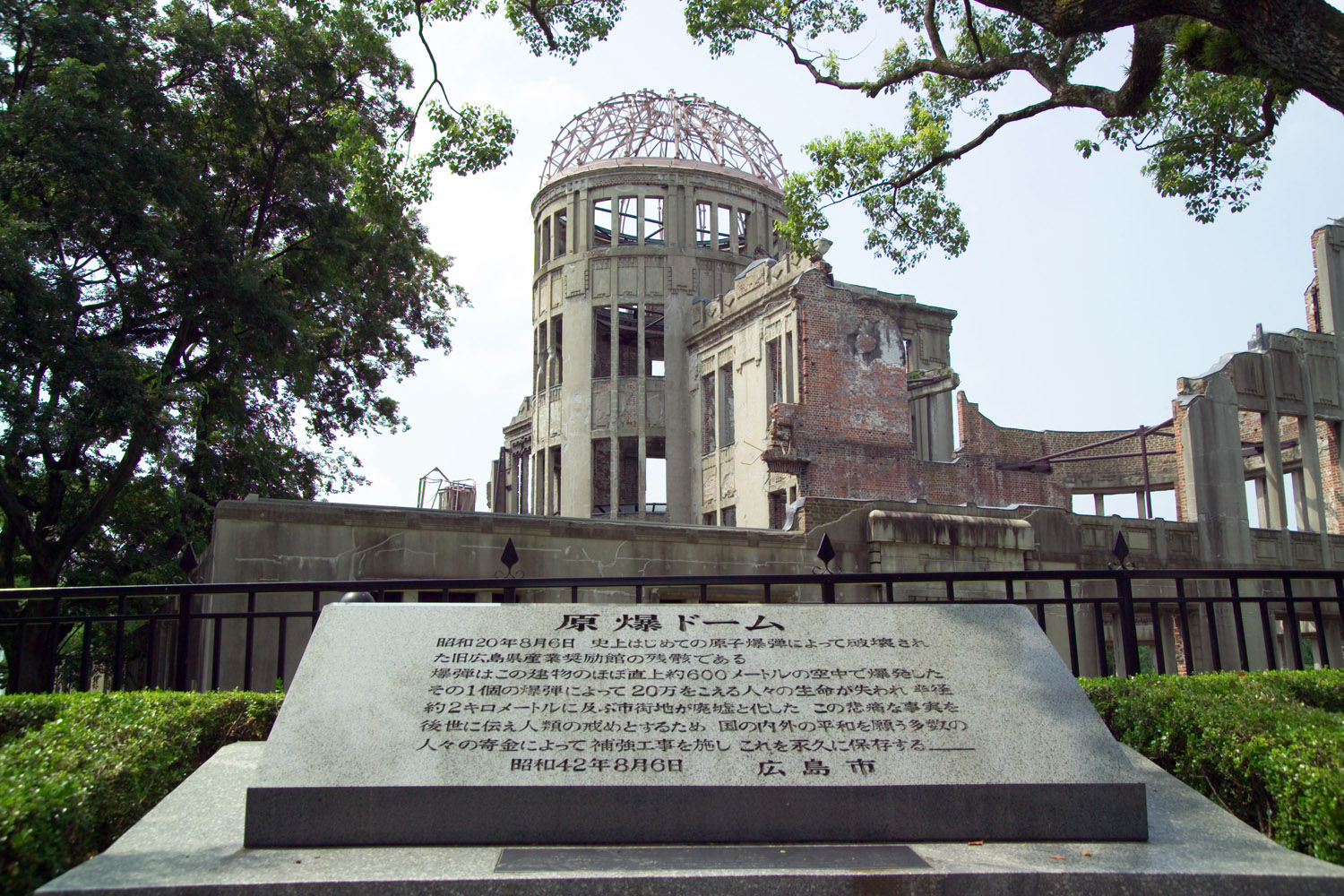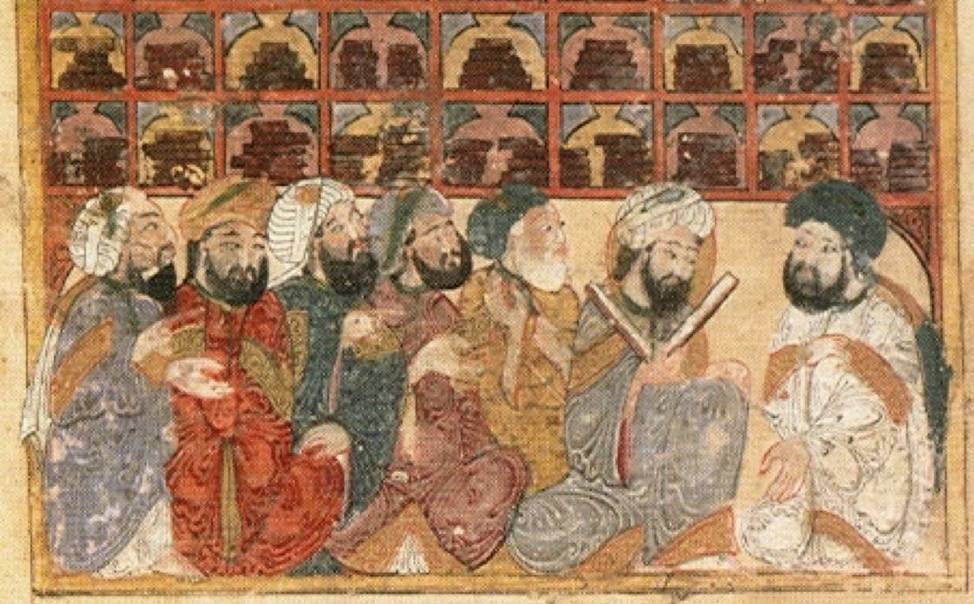Priceless Pieces Of History Destroyed By War
War takes a toll on everyone and everything, from human beings to our most prized historical artifacts. Despite the best efforts of groups like the Monuments, Arts and Archives Section (MFAA) of the Allied Forces, otherwise known as the "Monuments Men", sometimes priceless historical artifacts can't be saved.
Here are artifacts and prized possessions that are gone forever.
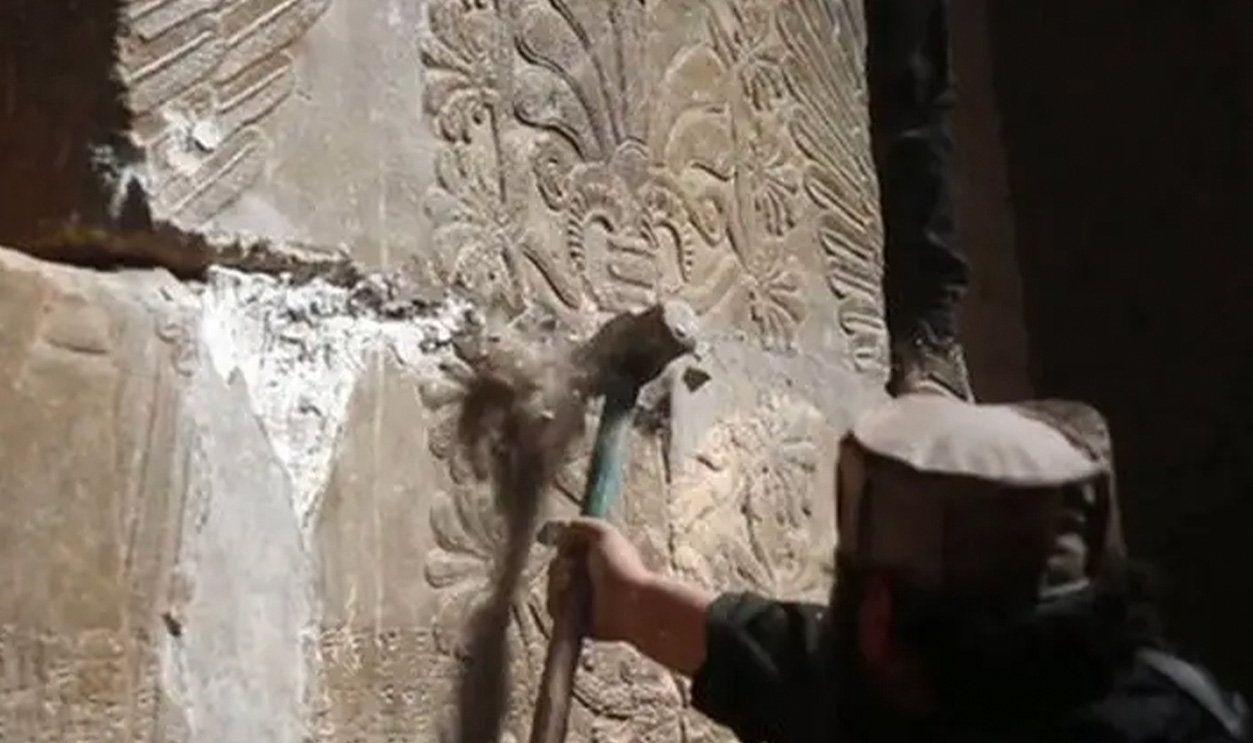
The Former Prefectural Industrial Promotional Hall
Today known as the "Atomic Bomb Dome" or the "Hiroshima Peace Memorial", the Prefectural Industrial Promotional Hall was built in 1915 by a Czech architect in Hiroshima, Japan. Most of the building was destroyed during the atomic bombing of Hiroshima, but the steel dome structure atop the hall still stands as a monument and reminder of strength and the possibility of peace from the ashes of war.
The Library Of Alexandria
The Library of Alexandria was one of the ancient world's most significant and important collections of papyrus scrolls in history. Approximately half a million ancient scrolls were housed within it. It, along with all its contents, was destroyed during the Palmyrene invasion of Ancient Egypt during the 3rd century.
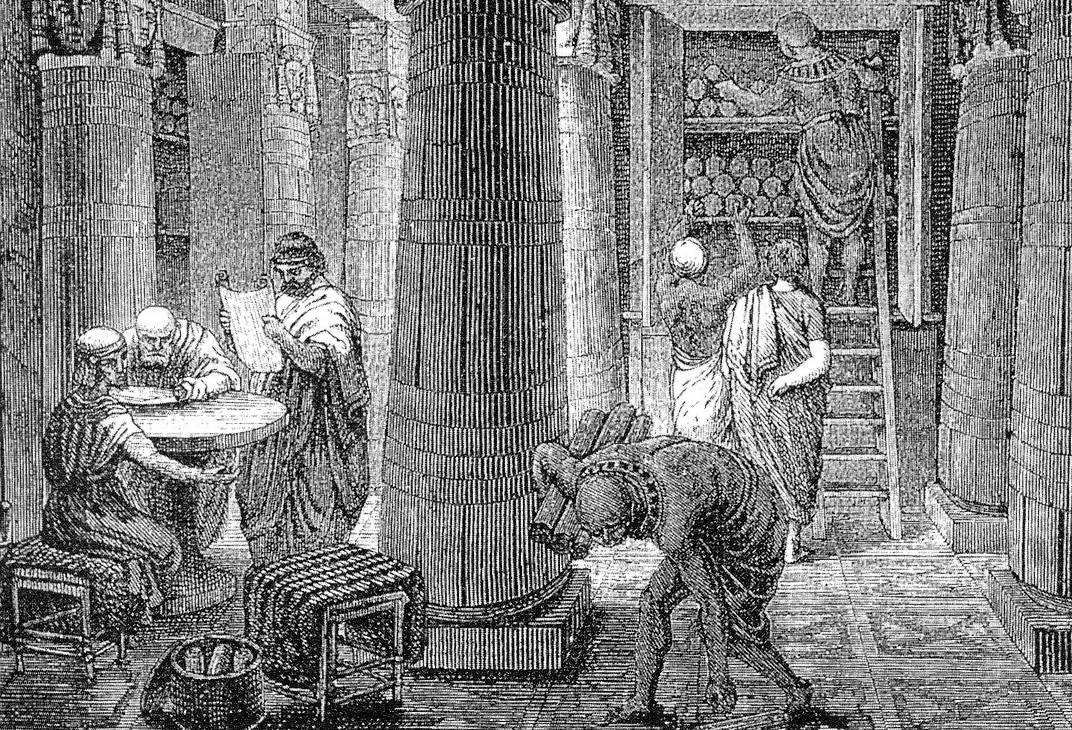 O. Von Corven, Wikimedia Commons
O. Von Corven, Wikimedia Commons
Ancient Japanese Castles
In the 19th century, Japanese emperor Meiji and his supporters smashed and destroyed ancient Japanese castles built in the 16th century. As Japan was modernizing, the "Meiji restoration" and its supporters wanted to do away with anything related to the ancient, feudal systems that the castles symbolized.
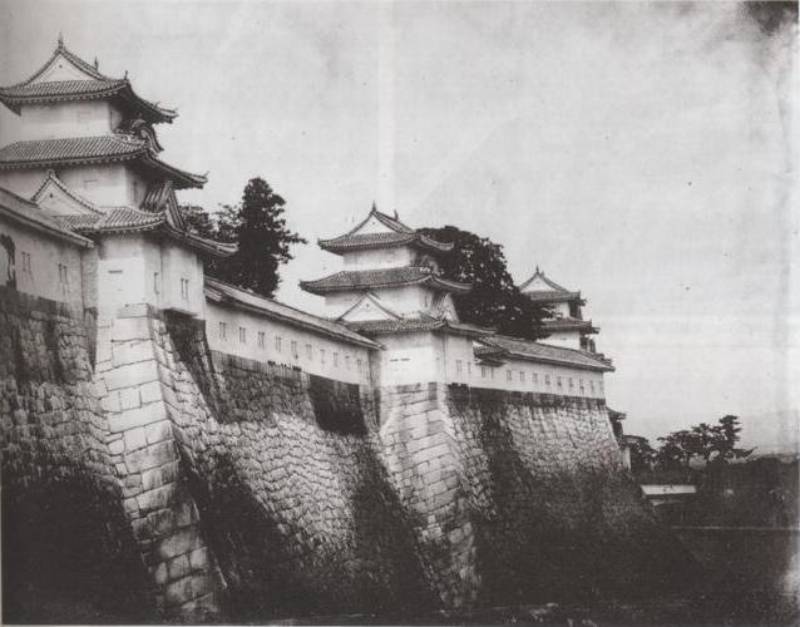 Unknown author, Wikimedia Commons
Unknown author, Wikimedia Commons
The Entire Town of Narva, Estonia
During WWII, 98% of the town of Narva in Estonia was destroyed by bombings. It's now rebuilt, but in the immediate aftermath only three buildings remained.
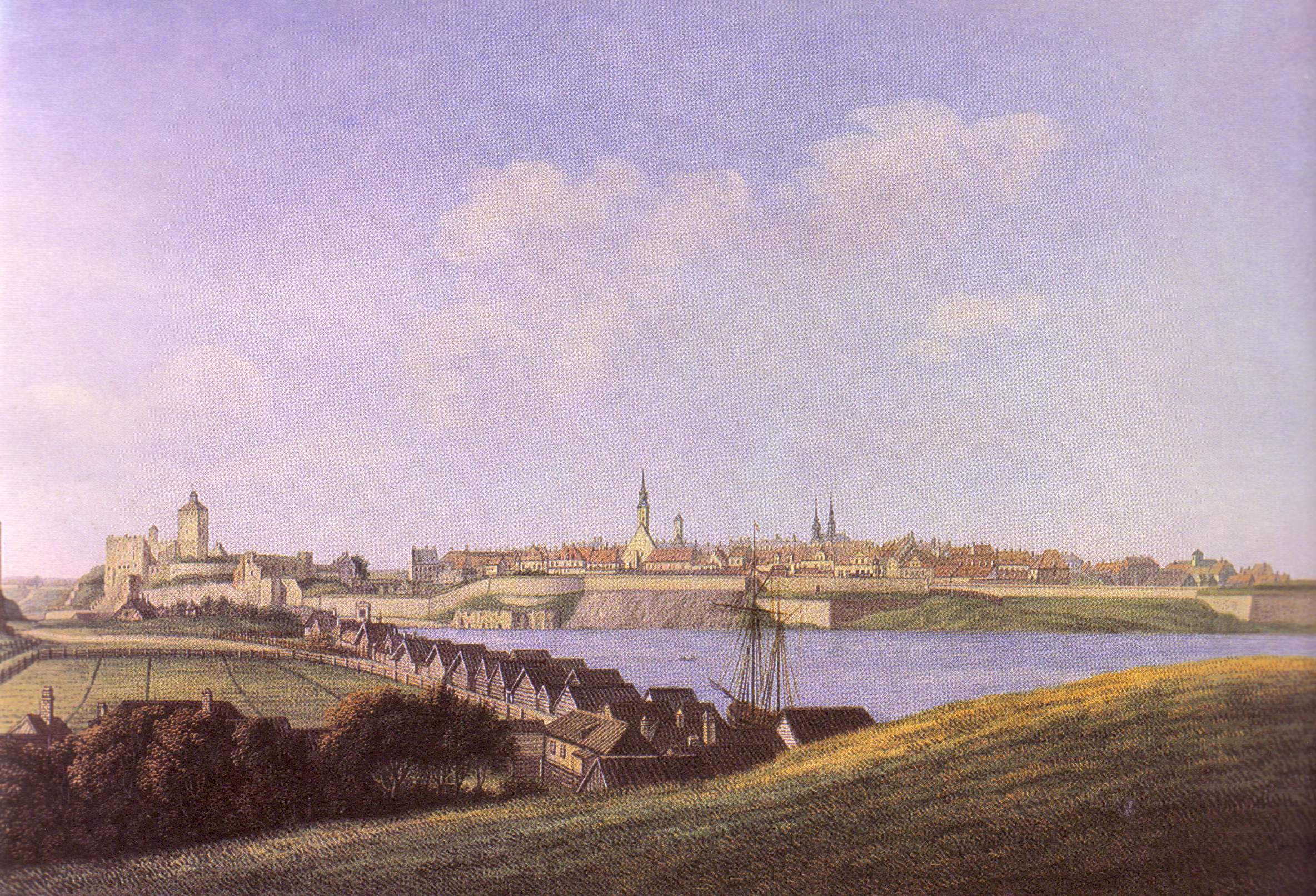 Unknown Author, Wikimedia Commons
Unknown Author, Wikimedia Commons
The Parthenon Damaged
Another wonder of the Ancient World to be significantly damaged was the Parthenon of Ancient Greece. Used by the Ottomans during the Great Turkish War of 1683-1699 as a gunpowder magazine, a shell hit the cache on September 26th, 1687, significantly damaging the structure of one of Ancient Greece's most wondrous buildings.
 James Skene of Rubislaw, Wikimedia Commons
James Skene of Rubislaw, Wikimedia Commons
The Four Courts Building
Located in Dublin, Ireland, the Four Courts Building housed much of Irish written history. In 1922, during the Battle of Dublin in the Irish Civil War, munitions stored at the Four Courts Building exploded, destroying thousands of years of documented Irish history.
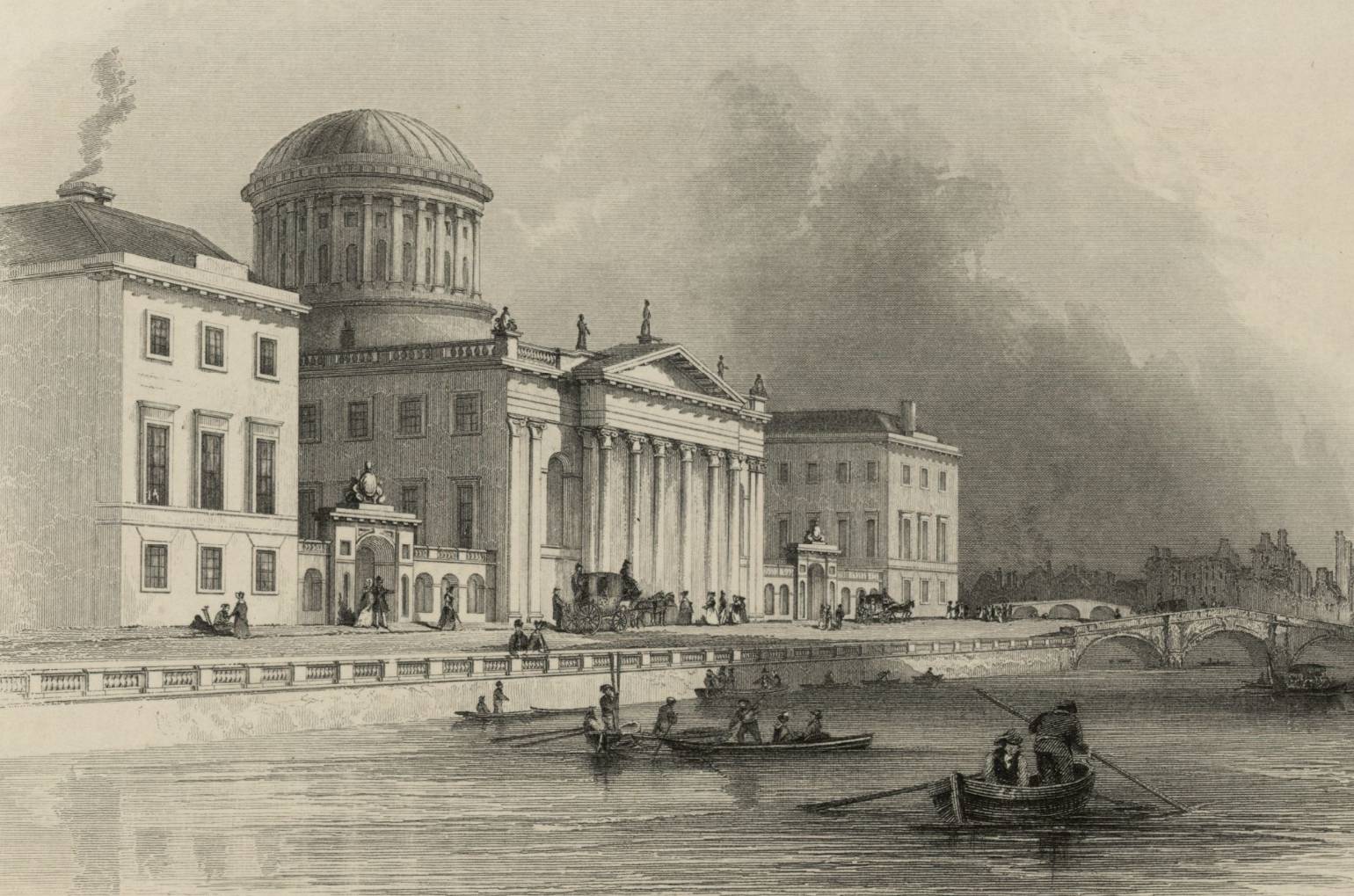 Alphonse Dousseau, Wikimedia Commons
Alphonse Dousseau, Wikimedia Commons
The Rotterdam Blitz
The German bombing of Rotterdam on May 14th, 1940 destroyed hundreds of years of architecture and artwork over the course of several hours of continuous bombing.
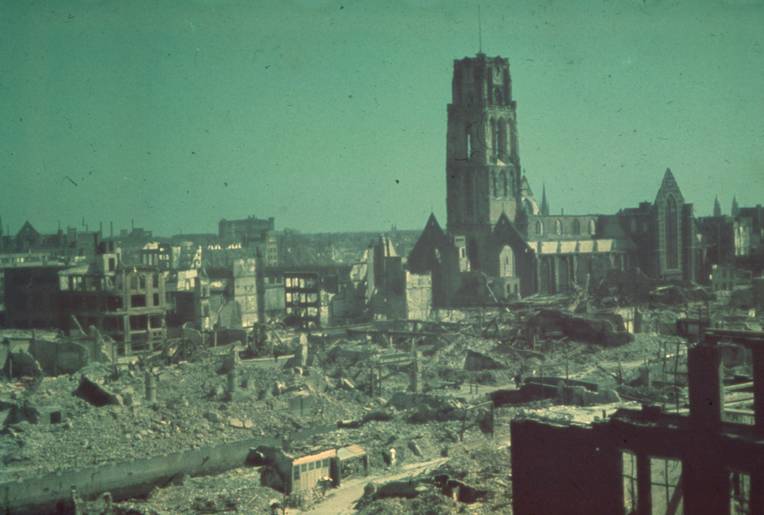 Hendrik Sutterland, Wikimedia Commons
Hendrik Sutterland, Wikimedia Commons
Countless Monasteries
In England in 1530, King Henry VIII launched "The Dissolution of the Monasteries", a set of royal orders allowing for troops to plunder, pillage, destroy, and otherwise close countless monasteries, including more than a dozen abbeys in England.
Countless works of art, sculptures, and relics were plundered or destroyed and many monasteries now lie in ruins throughout England.
 Littleblackpistol, Wikimedia Commons
Littleblackpistol, Wikimedia Commons

History's most fascinating stories and darkest secrets, delivered to your inbox daily.
The National Library of Serbia
The National Library of Serbia was destroyed and rebuilt twice throughout its history. Established in 1832, the National Library housed Turkish documents about the history of Serbia, 15th-century Cyrillic manuscripts, and old maps of Serbia. Essentially, it held the entire cultural history of Serbia that existed in print.
It was destroyed overnight on the 6th of August, 1941, as the Luftwaffe's bombing campaign of Yugoslavia began.
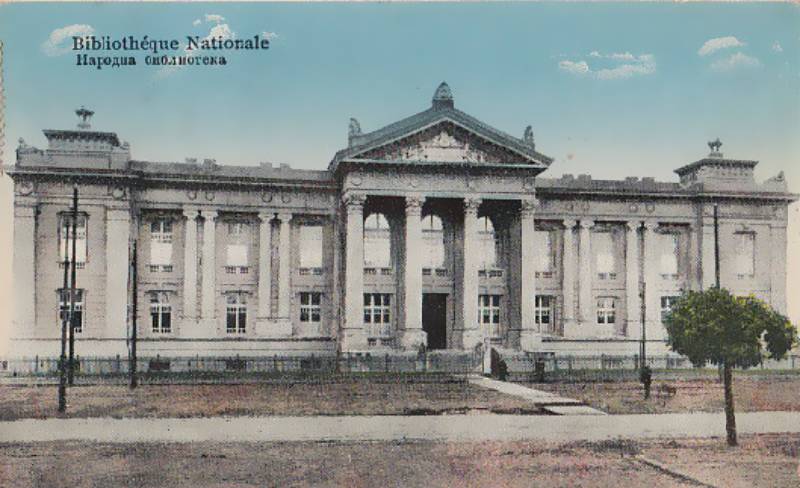 Unknown author, Wikimedia Commons
Unknown author, Wikimedia Commons
The Porcelain Tower
Located in Nanjing, China, the Porcelain Tower is a now-replicated structure that was completely destroyed in 1856 during the Taiping Rebellion against the emperor. Standing more than 259 feet tall, and more than 100 bricks wide at its base, it was considered one of the Seven Wonders Of The Medieval World. A replica was built on its site in 2015.
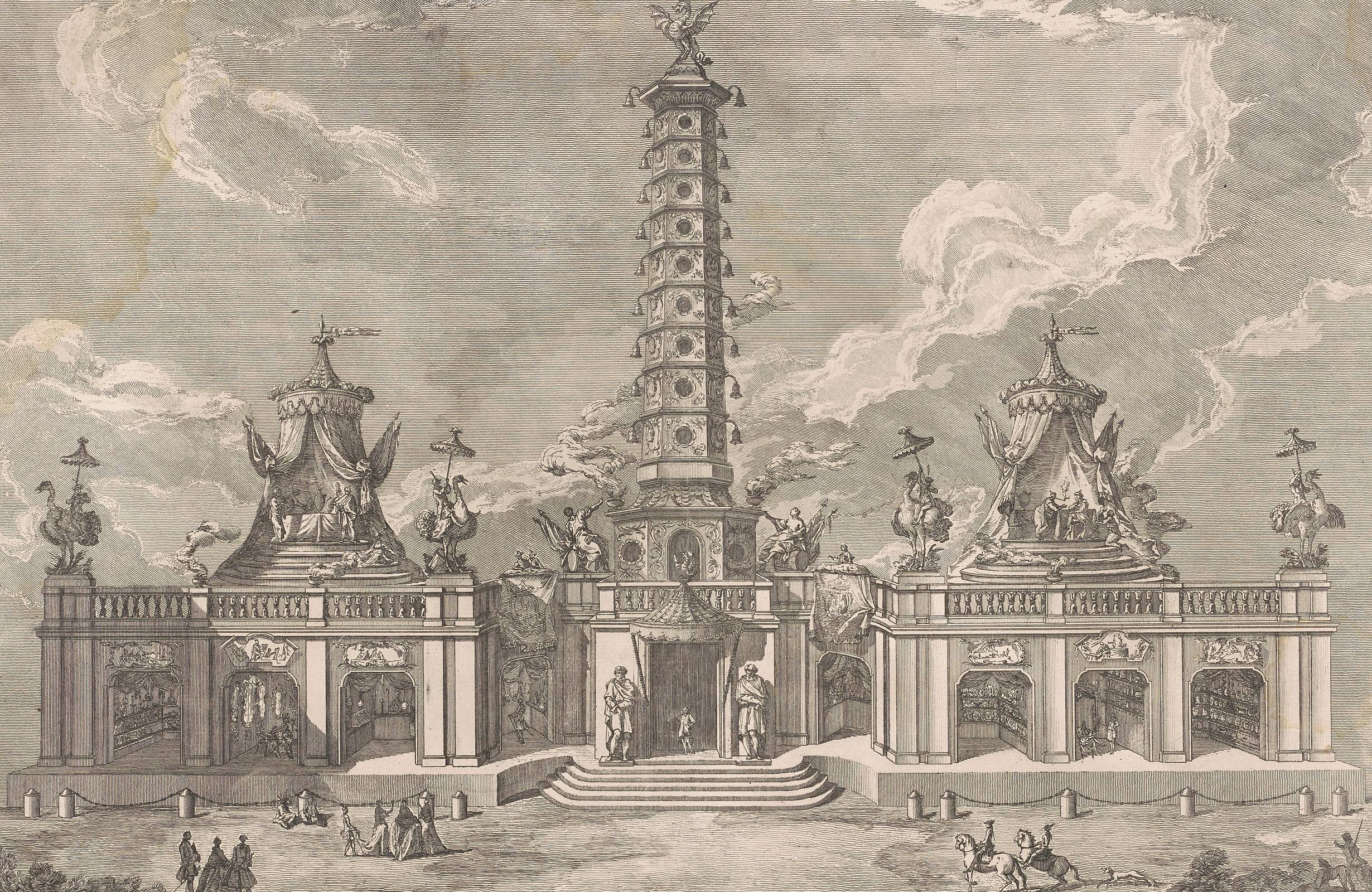 National Gallery of Art, Wikimedia Commons
National Gallery of Art, Wikimedia Commons
The Old Summer Palace
The Opium Wars in China in the mid-19th century led to the destruction of the Old Summer Palace in Beijing, known as the "Versailles Of The East". Destroyed by British and French forces, the palace now is a garden of stone ruins that's open to the public.
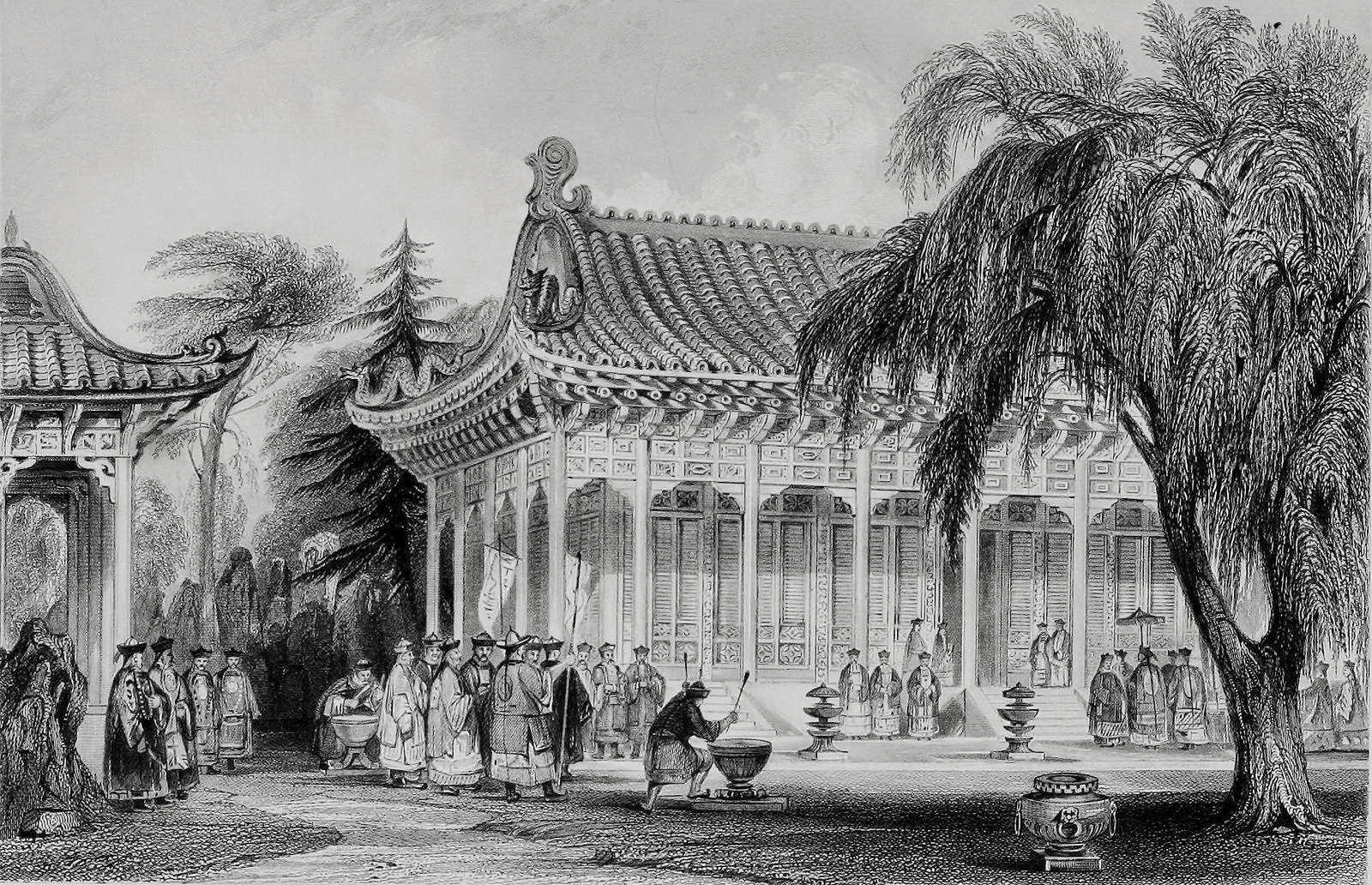 Thomas Allom, Wikimedia Commons
Thomas Allom, Wikimedia Commons
The Old Town Of Warsaw
Many European cities will have an "Old Town". The Polish capital of Warsaw saw its old town razed by the invading Nazis during WWII. Many buildings from the 13th and 14th centuries were destroyed, including St John's Cathedral and the Royal Castle.
After WWII, the Old Town became the world's first attempt to reconstruct an old city, which was successful, but much of it is still irreplaceable.
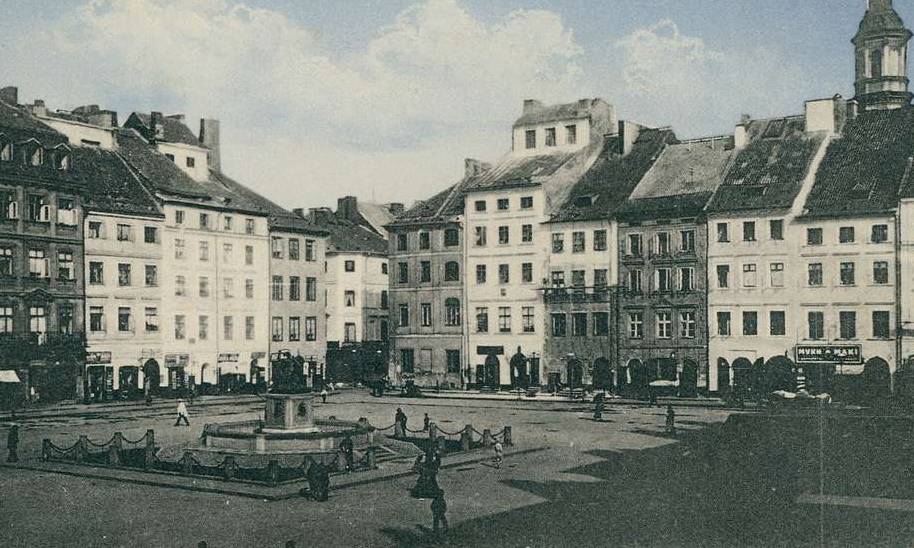 The National Library of Poland, Picryl
The National Library of Poland, Picryl
Christchurch Greyfriars
Originally built in 1225 as a Franciscan church and the burial place of four English queens from the 13th and 14th centuries, Christchurch Greyfriars in London was destroyed by German bombs during WWII. What remains is a single tower and the church's outer walls, including a rose garden on the site of the old building.
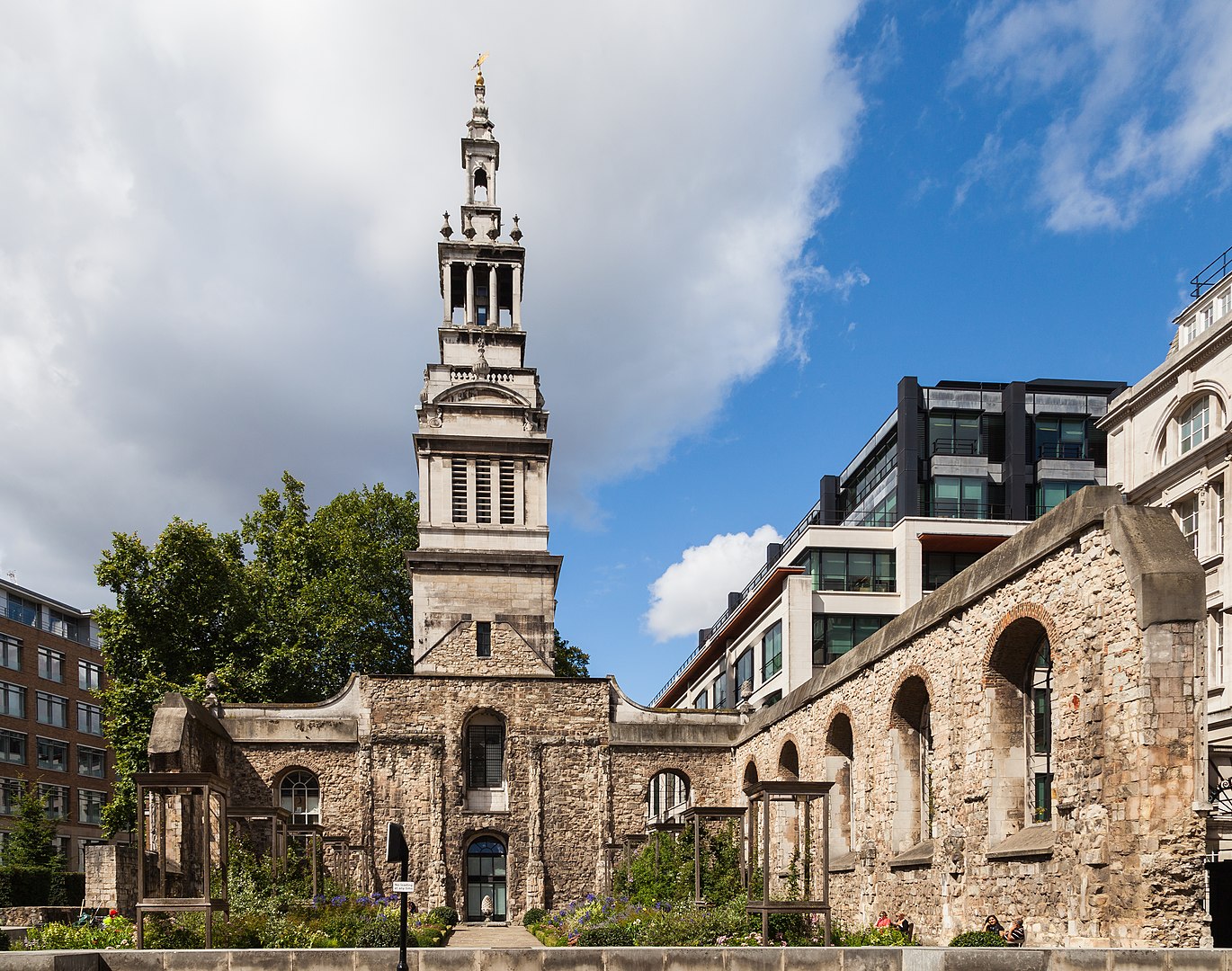 Diego Delso, CC BY-SA 4.0, Wikimedia Commons
Diego Delso, CC BY-SA 4.0, Wikimedia Commons
St. Michael's Old Cathedral
Another English church to fall victim to the German bombing campaign of WWII was St Michael's Old Cathedral in Coventry. Coventry was one of the hardest-hit areas by the Germans during 1940 and the old Gothic church, constructed in the 14th century, was completely destroyed.
A new church was built next door and opened in 1962.
 William Crotch, Wikimedia Commons
William Crotch, Wikimedia Commons
Leuven University Library Book Collection
The Leuven University book collection from the 17th century was destroyed twice by Germany—during WWI by fire and during WWII by bombing. The Belgians rebuilt the library after the war, but approximately 250,000 books and 950 manuscripts from the 17th century and prior had been destroyed.
 G.Garitan, CC BY-SA 4.0, Wikimedia Commons
G.Garitan, CC BY-SA 4.0, Wikimedia Commons
The Royal Opera House
On the Spanish island of Malta, there lies the Royal Opera House, known as the "Pjazza Teatru Rjal" . Now an open-air theater, the Opera House was twice gutted—once by fire in 1873 and then again by German bombings in 1942.
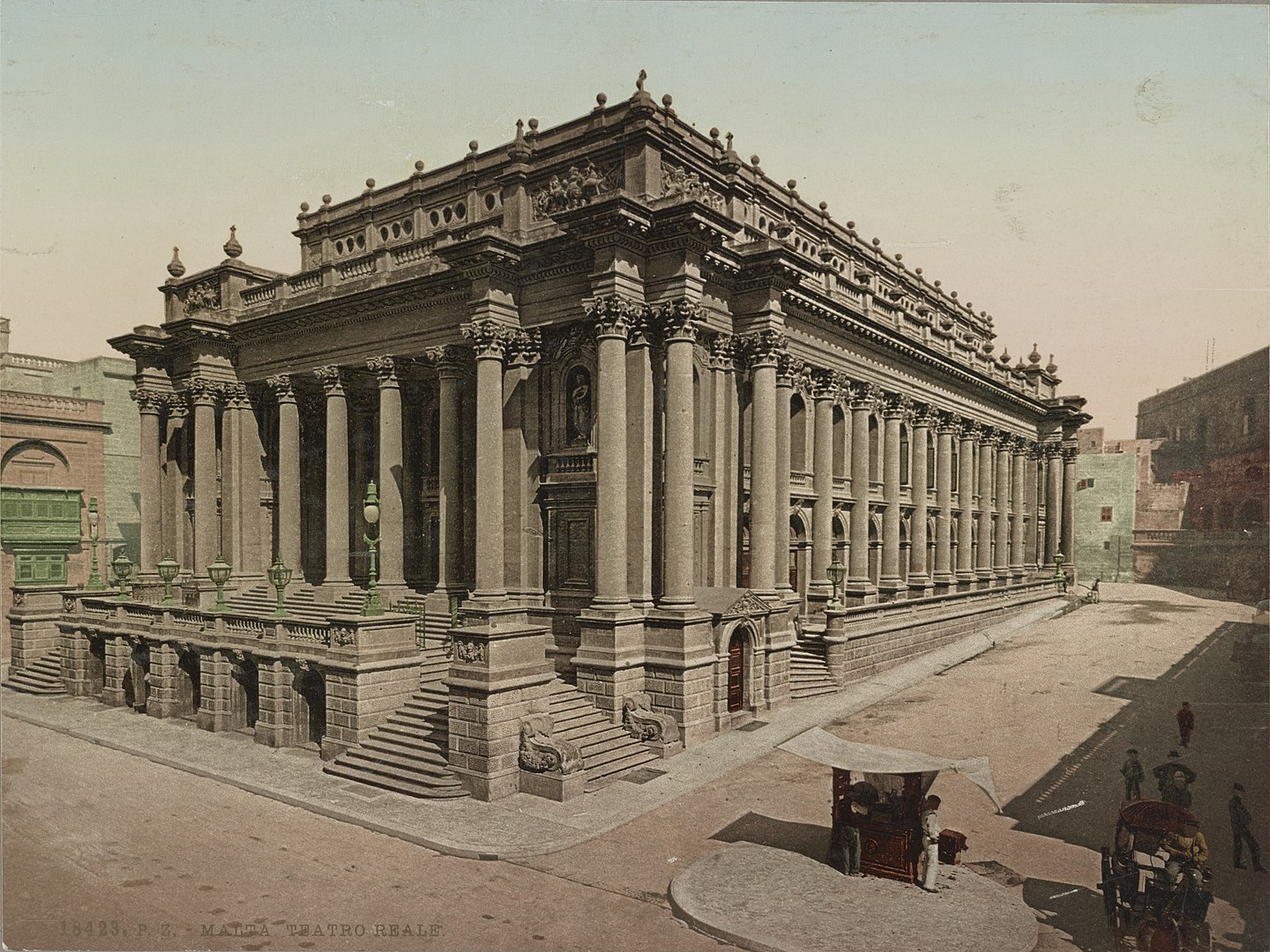 Photoglob Co., Wikimedia Commons
Photoglob Co., Wikimedia Commons
The Kaiser Wilhelm Memorial Church
The Kaiser Wilhelm Memorial Church was a church dedicated to the German Kaiser of WWI, Wilhelm II, the last German Emperor. A memorial church was built in his honor in the 1890s and was destroyed by (you guessed it), an Allied bombing raid in 1943.
The Allies refused to rebuild the church because of its association with German nationalism. But in 2007, a British pilot during the war joined a campaign to rescue the old church from decay (and was successful).
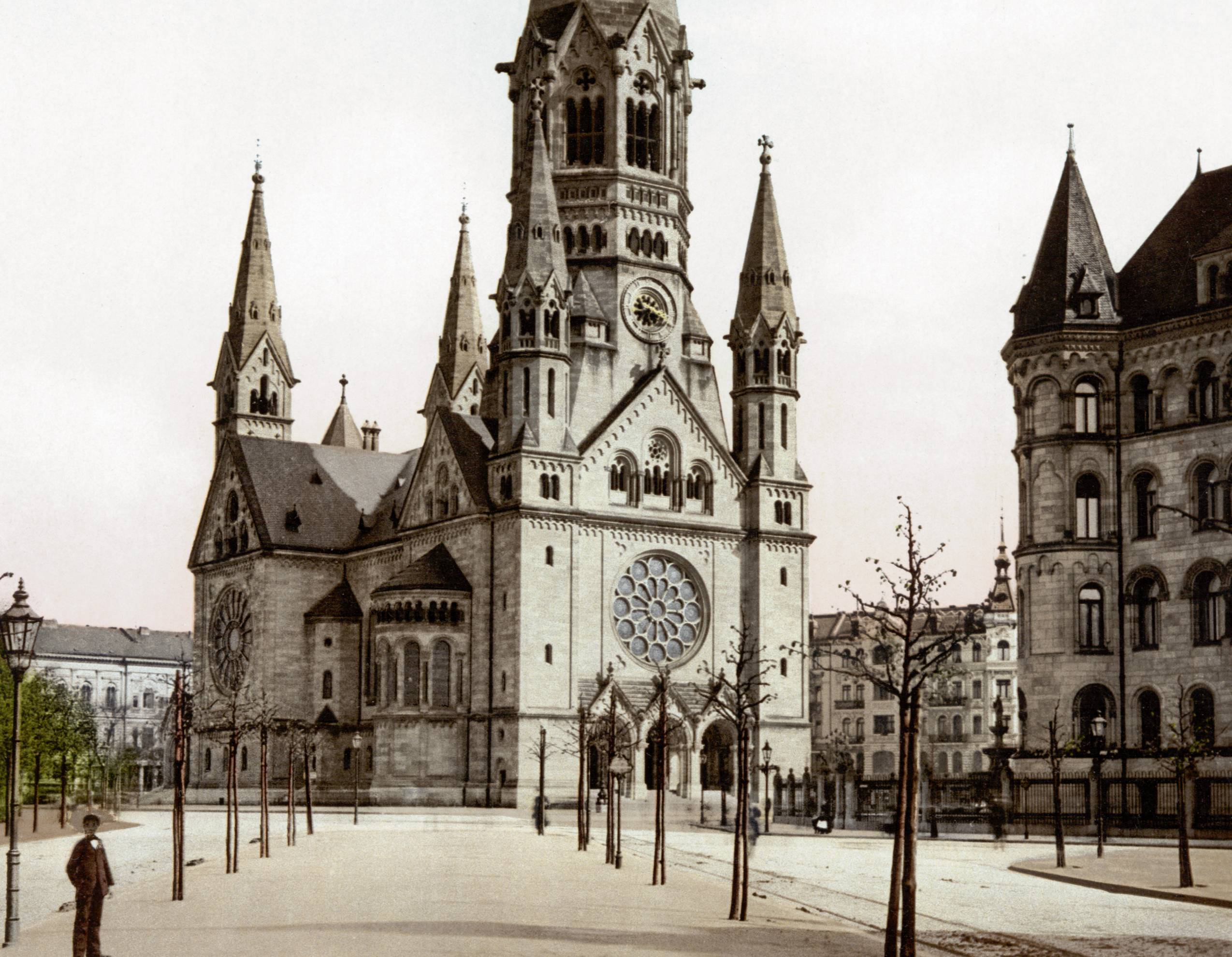 Unknown Author, Wikimedia Commons
Unknown Author, Wikimedia Commons
Zwinger Art Museum
Forever immortalized in Kurt Vonnegut's Slaughterhouse Five, the firebombing of Dresden by the Allies during the WWII destroyed much of the city, including the Zwinger Art Museum, otherwise known as the "Old Masters Picture Gallery". Over 200 paintings were destroyed, including priceless ones from Raphael and Rembrandt.
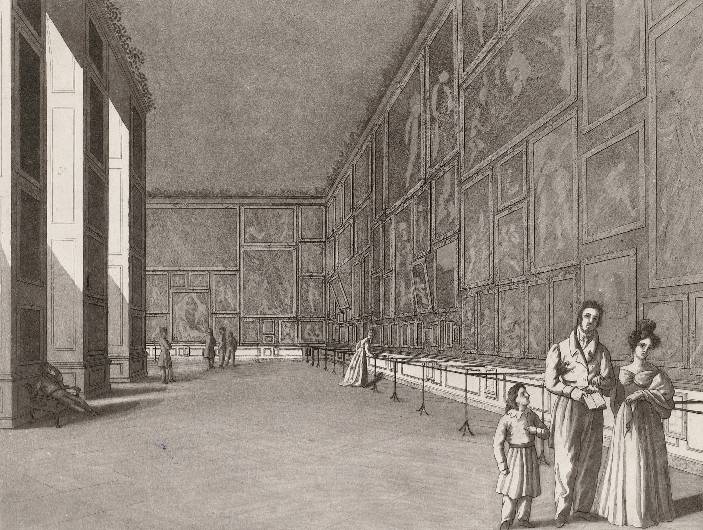 Radierung, Auqutinta, Wikimedia Commons
Radierung, Auqutinta, Wikimedia Commons
Operation Meetinghouse
Conducted during the night of March 9th, 1945, Operation Meetinghouse was the single deadliest bombing raid in human history. The United States Air Force dropped 1,665 tons of 500-pound bombs over Tokyo, killing 100,000 civilians and injuring over one million.
The raid destroyed 260,000 buildings, many of which were culturally significant and irreplaceable.
 US military, Wikimedia Commons
US military, Wikimedia Commons
Documentation Of Life Under Ottoman Rule In Bosnia
In 1992, the Bosnian War was raging, and the National Library of Bosnia was under near constant bombardment, eventually leading to the destruction of the entire building. Housed within the national archives were documents that offered incredibly rare glimpses into the lives of Bosnians under both Ottoman and Austro-Hungarian rule from the early 20th and 19th centuries. Gone, forever.
 Internet Archive Book Images, Wikimedia Commons
Internet Archive Book Images, Wikimedia Commons
Mehmed Kukavica Mosque
A cultural center for Turkish Muslims in Bosnia, and Bosnian Muslims in general, the Mehmed Kukavica Mosque in Focá, Bosnia was destroyed during the Bosnian War in 1993. The structure is still being restored as a way to preserve Bosnian Muslim culture in the area, but priceless documents and artifacts from the Ottoman era were lost.
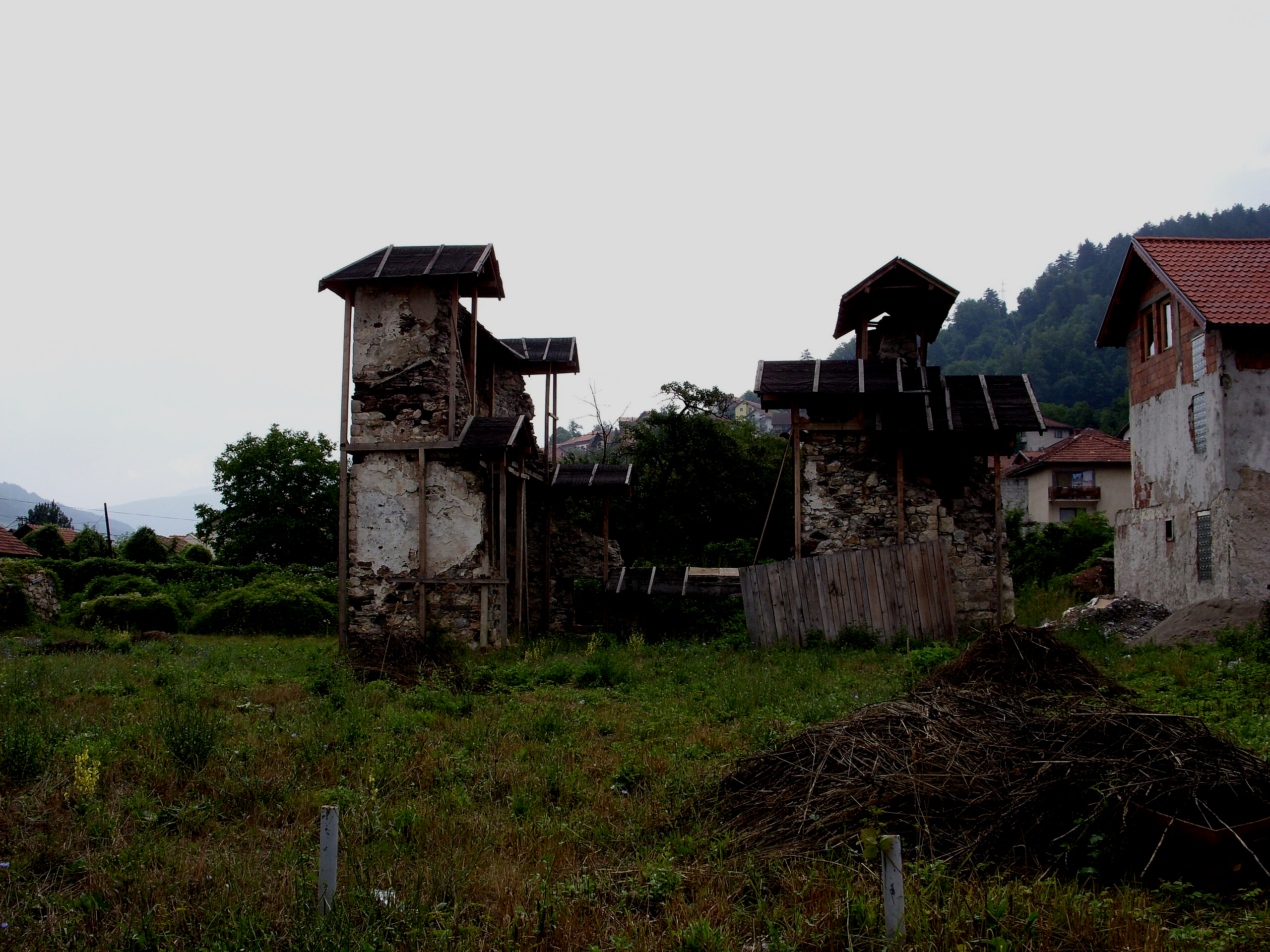 Julian Nyča, CC BY-SA 4.0, Wikimedia Commons
Julian Nyča, CC BY-SA 4.0, Wikimedia Commons
Buddhas Of Bamiyan
Located in Bamiyan, Afghanistan, the Buddhas of Bamiyan were 170-foot tall Buddhas carved into the roc kface—they were the tallest Buddhist statues in the world. The site had been holy to Buddhists in Afghanistan since the 7th century. The Taliban took 25 days to destroy the "idolatrous" statues in 2001, using tanks, artillery shells and mortars.
 Emile Therond, Wikimedia Commons
Emile Therond, Wikimedia Commons
The Entire Repository Of The Baghdad Library
With the Americans knocking on the door, Saddam Hussein loyalists destroyed millions of books, manuscripts and stone tablets from the Ancient World, including irreplaceable artifacts from the Sumerian and Assyrian ages. That which wasn't plundered by the Iraqi military was set alight and tragically burned.
Sidi Sha'ab Mosque
Containing irreplaceable artifacts from ancient Islamic history, the Sidi Sha'ab Mosque in Tripoli, Libya, first built in 1527 AD, was razed to the ground by Salafi Muslim attackers in 2012, following tensions between Libya's Sufi and Salafi Muslim communities.
Apamea Historical Sites
The Apamea Historical Sites are among the most-visited sites in Syria, or at least they were prior to the outbreak of the Syrian Civil War in 2011. Known for its paved streets and amazing mosaics, Apamea had been a base for the Seleucid Empire, the Roman Empire, and the Crusaders. Thanks to the Syrian Civil War, only ruins now remain.
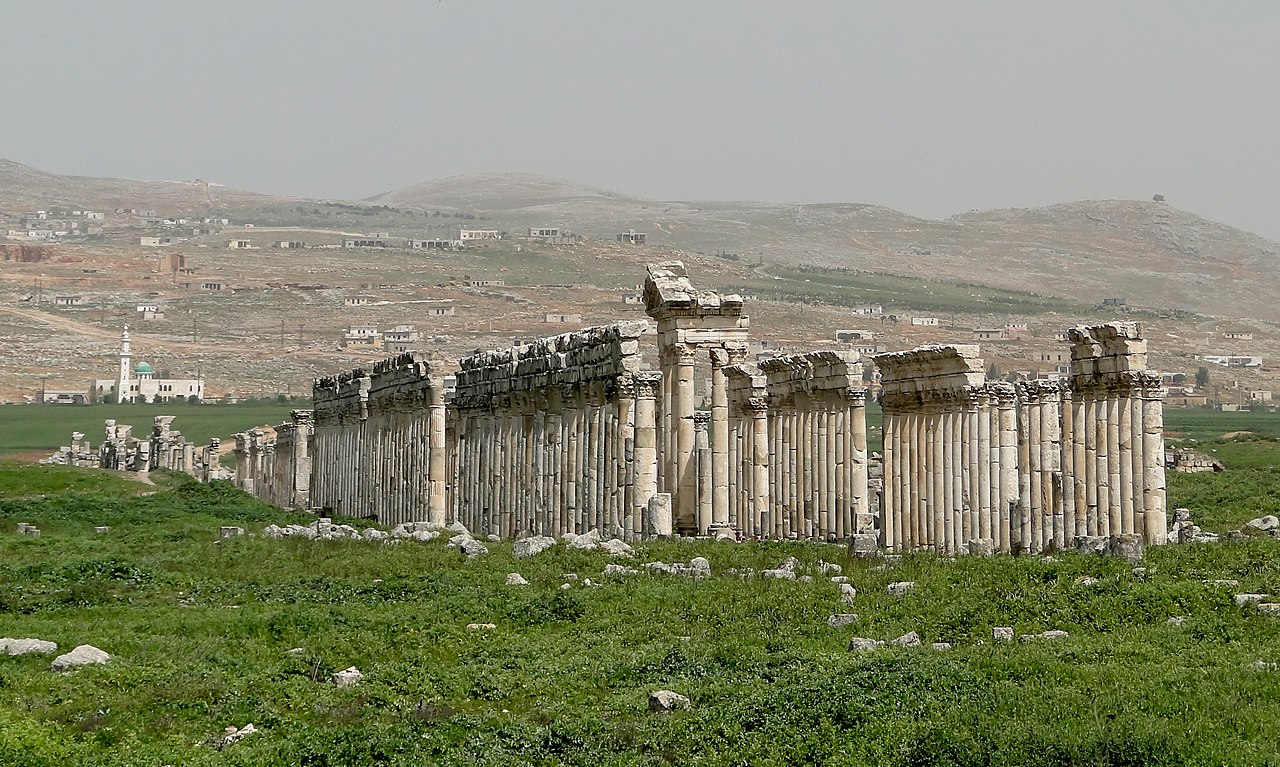 Bernard Gagnon, CC BY-SA 3.0, Wikimedia Commons
Bernard Gagnon, CC BY-SA 3.0, Wikimedia Commons
Omari Mosque Minaret
The Omari Mosque in Daraa, Syria is one of the oldest mosques in Islam, built in the 7th century when the religion was founded. The priceless minaret, one of the oldest in the entire Middle East, was destroyed in 2011 by shelling from the Syrian military.
 Matson Collection, Wikimedia Commons
Matson Collection, Wikimedia Commons
The Museum Of Islamic Art
Nearly 20 to 30% of historic Islamic art was destroyed in 2014, when a car bomb detonated outside of the Museum of Islamic Art in Cairo, Egypt. The museum itself was largely undamaged, but when windows were blasted out and the front façade damaged, huge pieces of Islamic artistic history and expression were lost forever.
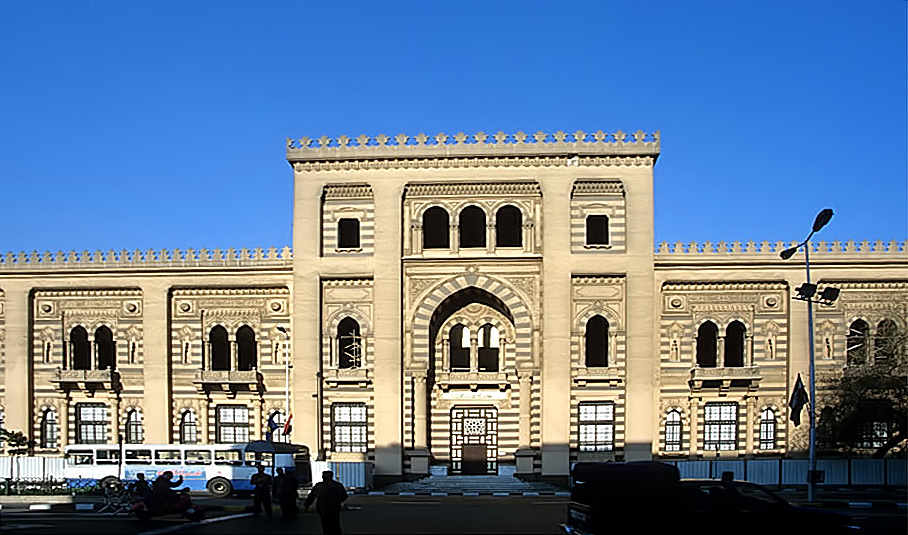 Roland Unger, CC BY-SA 3.0, Wikimedia Commons
Roland Unger, CC BY-SA 3.0, Wikimedia Commons
The Lions Of Haddatu
The Lions of Haddatu were carved in the 8th century BC out of basalt rock and guarded the long-gone palace of an ancient Assyrian King. Two surviving lions were on permanent display in Al-Raqqa, Syria until they were bulldozed by ISIS in 2014.
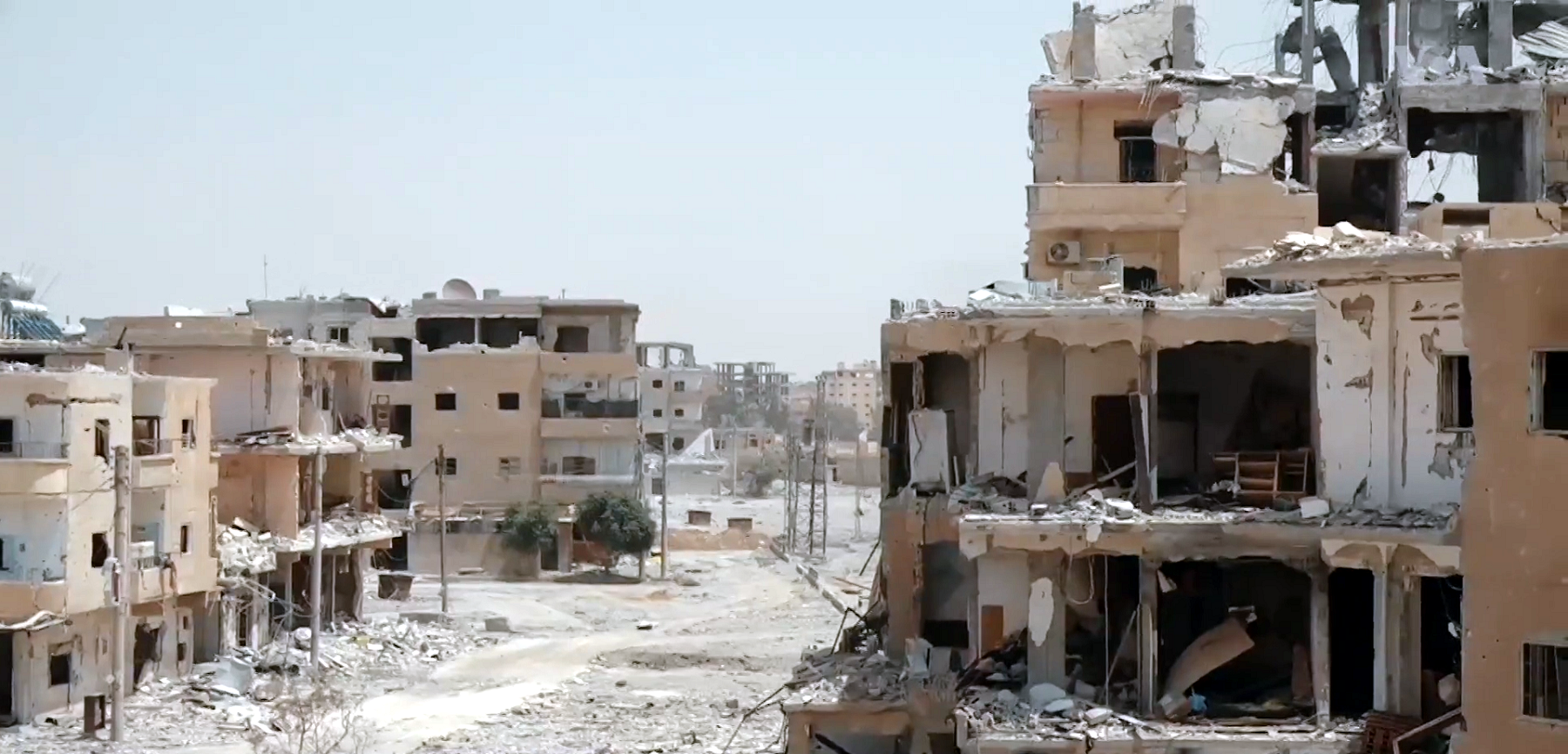 Mahmoud Bali (VOA), Wikimedia Commons
Mahmoud Bali (VOA), Wikimedia Commons
Sana'a's Historic District
Ever since the Yemeni Civil War began in 2015, Sana'a's historic district in the capital has been a frequent target of bombings. The Yemeni capital city has been inhabited for 2,500 years and is a UNESCO World Heritage Site.
Unfortunately, countless mosques, tower-homes, and parts of the walls of the old city have been destroyed. Many UNESCO sites in particular were destroyed by a Saudi-led airstrike in 2015.
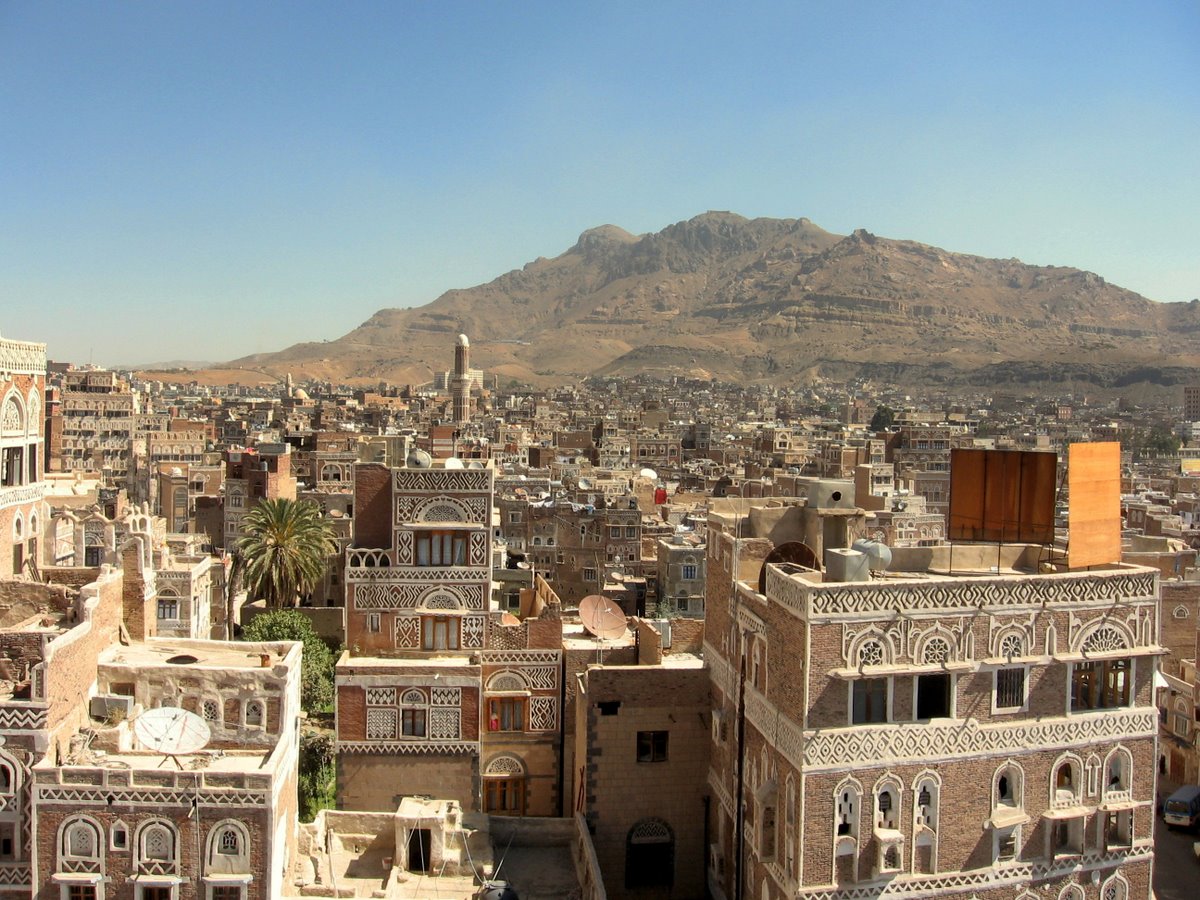 ai@ce, CC BY 2.0, Wikimedia Commons
ai@ce, CC BY 2.0, Wikimedia Commons
The Great Mosque Of Aleppo
The Great Mosque of Aleppo dates from the 11th century BC, including its singular minaret—which was destroyed in 2013 by bombings and gunfire. While each side blamed the other for the destruction, the mosque is said to contain the remains of Zechariah, the father of John the Baptist.
While much of the mosque remains intact, the damage done to the minaret and certain parts of the interior is incalculable.
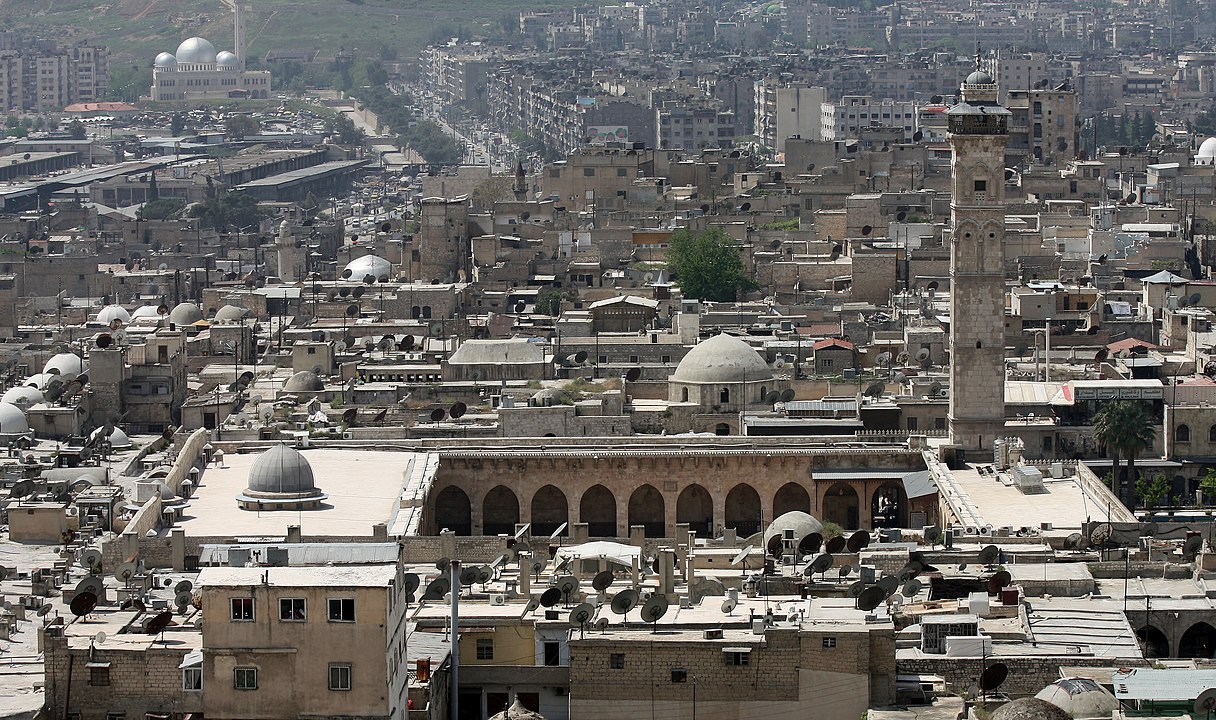 Guillaume Piolle, CC BY 3.0, Wikimedia Commons
Guillaume Piolle, CC BY 3.0, Wikimedia Commons
The Al-Mahdi Mosque
Back to Yemen we go—this time, the Al-Mahdi Mosque, famous for its gorgeous white dome and incredibly intricate carvings. Built in 1651 on the orders of Imam Al-Mahdi Abbas, Yemen's ruler, the incredible structure was attacked and destroyed by Saudi airstrikes, again in 2015.
 Bernard Gagnon, CC BY-SA 3.0, Wikimedia Commons
Bernard Gagnon, CC BY-SA 3.0, Wikimedia Commons
The Temple Of Bel
The temple of Bel, built to honor the Mesopotamian god Bel in the first century, was destroyed by the Islamic State in 2015. There were 1,000 columns, 500 tombs, and a Roman-built aqueduct. All were destroyed when ISIS blew up the temple.
Among the best preserved ancient ruins in the world, the temple's front archway still stands.
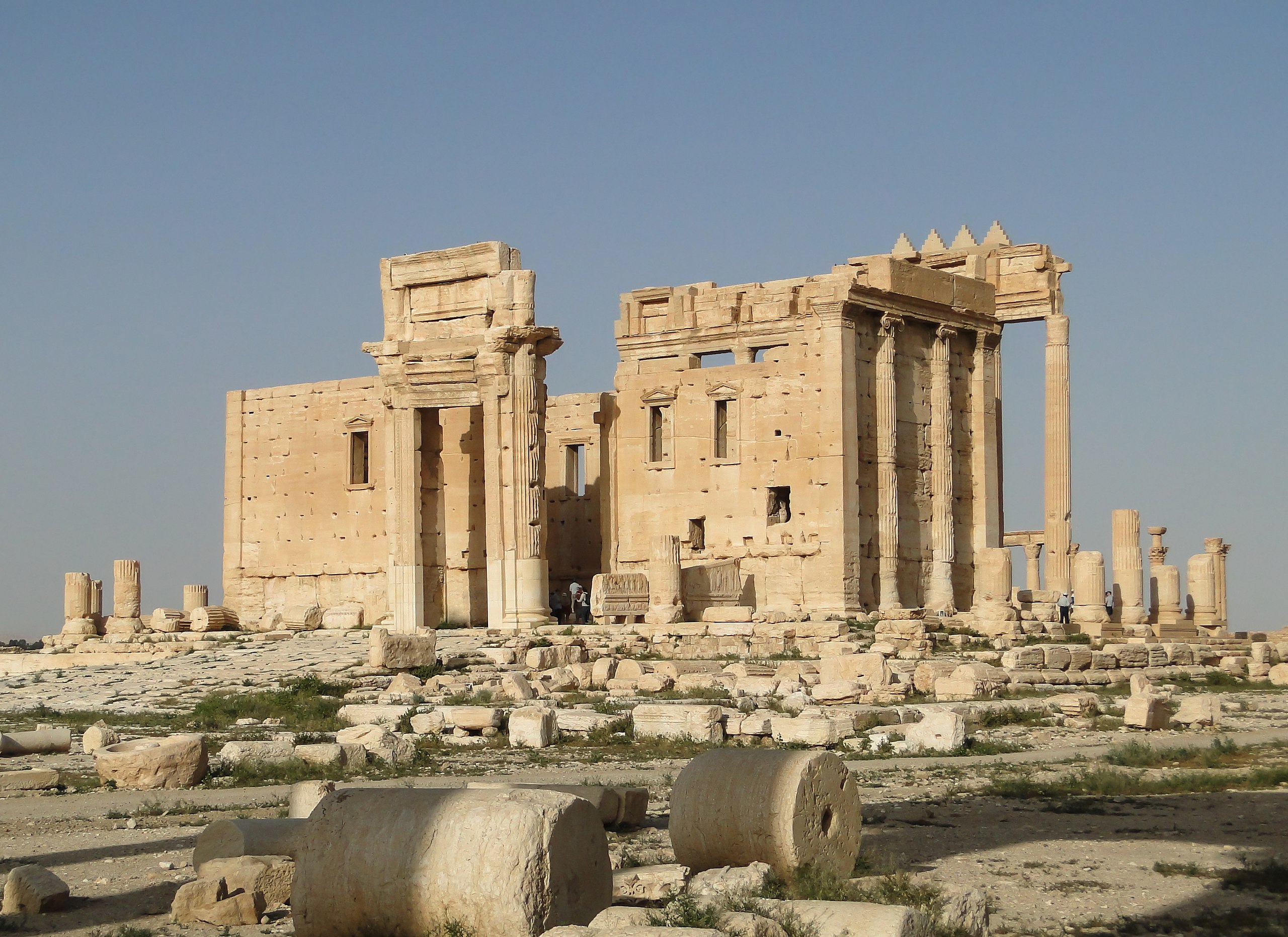 Bernard Gagnon, CC BY-SA 3.0, Wikimedia Commons
Bernard Gagnon, CC BY-SA 3.0, Wikimedia Commons
The Gates Of Nineveh
In the 7th century, Nineveh was the most populous city in ancient Assyria, now modern-day Iraq. Two of the huge fortifications were destroyed by ISIS in 2016. Nineveh was the largest city in the world at the time. Now, two gates of that incredible piece of history are destroyed forever.
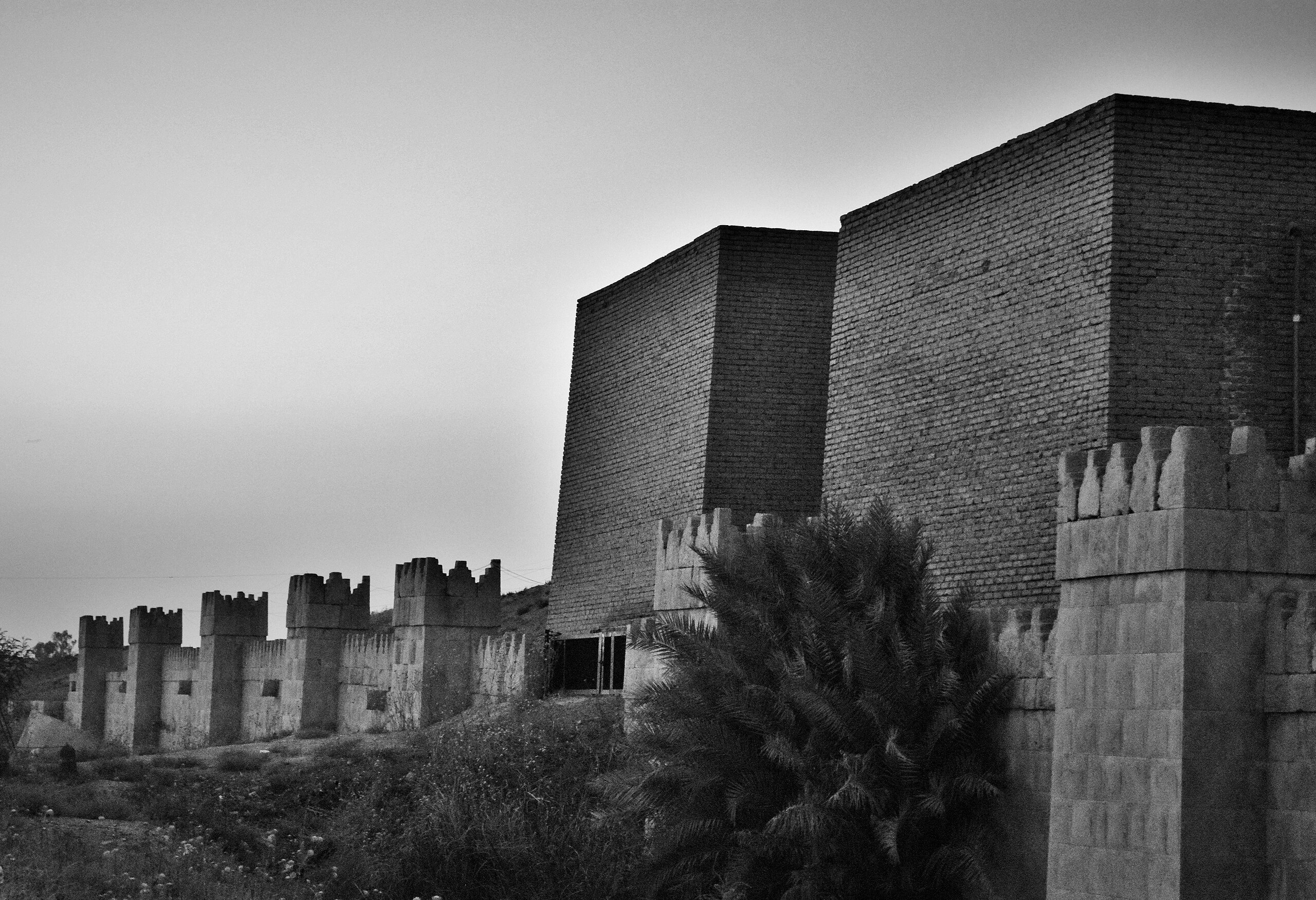 Omar Siddeeq Yousif, CC BY-SA 4.0, Wikimedia Commons
Omar Siddeeq Yousif, CC BY-SA 4.0, Wikimedia Commons
Djinguereber Mosque
Located in Timbuktu, Mali, the Djinguereber Mosque suffered damage in 2012 when Islamist militants raided the mosque. Built during the Malian Empire of the 14th century out of pounded sand and wood, the man who ordered its destruction, Ahmad al-Faqi al-Mahdi, plead guilty in the ICC to "destruction of cultural sites" in 2016—the first time anyone had been prosecuted by the ICC for such a crime.
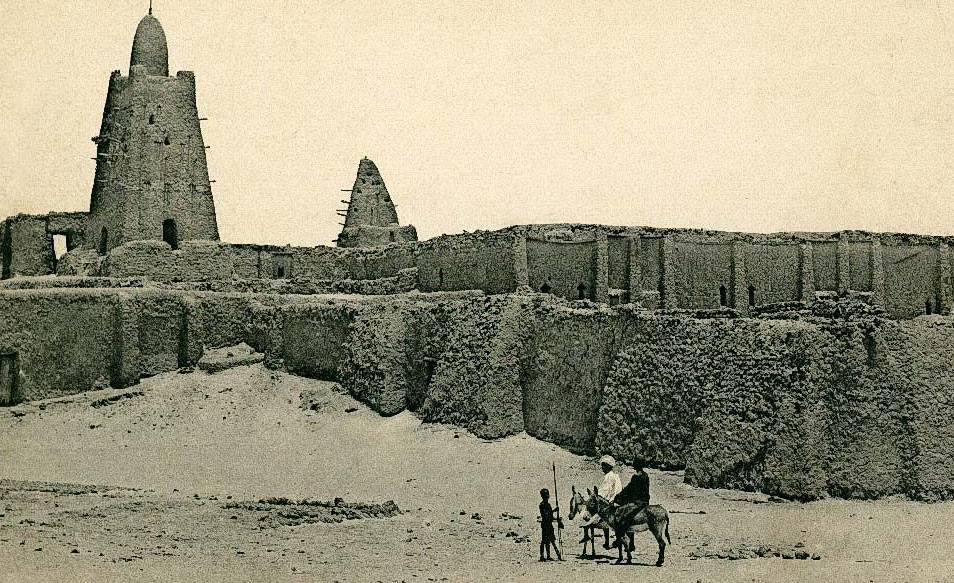 Edmond Fortier, Wikimedia Commons
Edmond Fortier, Wikimedia Commons
Guatemalan Mayan Codices
One of the most ancient texts in the world was destroyed by the Spanish priest Diego de Landa. De Landa led a campaign (more of a war, really) against the Mayan civilization's remnants in text and illustrations, believing them blasphemous.
In 1492, he ordered 5,000 Mayan cultural images and 27 ancient codices of incalculable cultural and historical value be destroyed.
 Outisnn, CC BY 3.0, Wikimedia Commons
Outisnn, CC BY 3.0, Wikimedia Commons
The Rivers Ran Black With Ink
When the Mongols came through Baghdad, Iraq in 1258, they destroyed the city. They sacked it completely, along with the House of Wisdom, an intellectual hub which housed millions of translations of Ancient Greek material. Apparently, the House of Wisdom's sacking led to rivers running black with ink.

